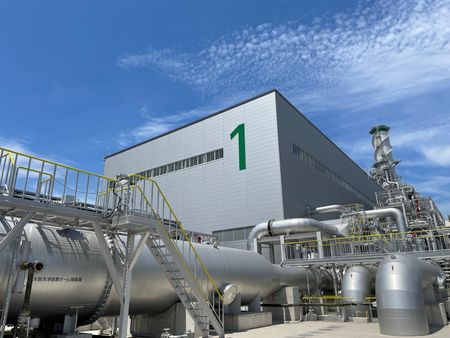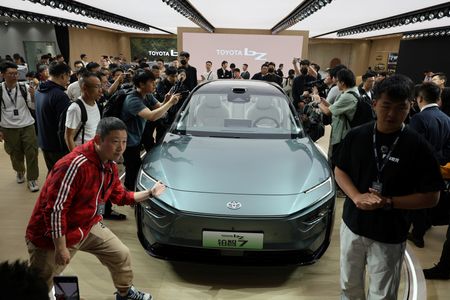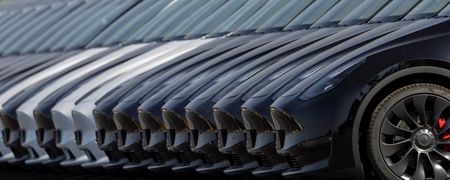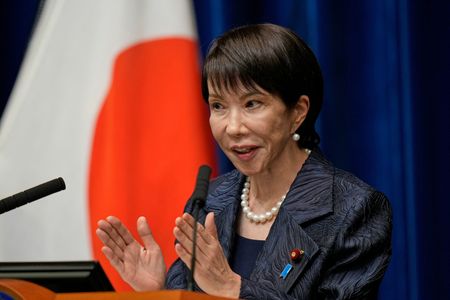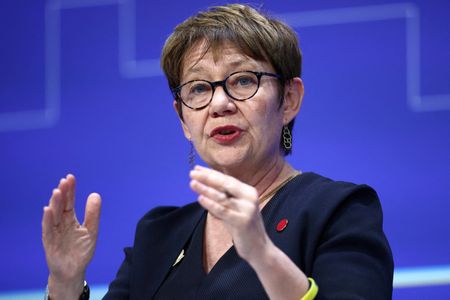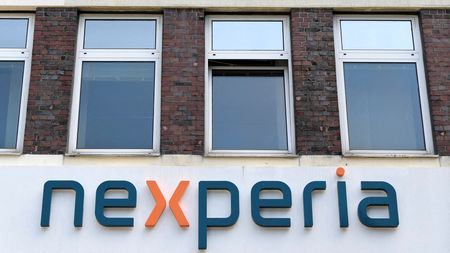By Yuka Obayashi and Katya Golubkova
TOKYO (Reuters) -Japan’s budding power futures market could be set for a growth spurt as a government proposal requiring retailers to secure electricity supply as much as three years in advance is likely to spur hedging activity to protect against price fluctuation.
Beginning as soon as for fiscal 2030, the industry ministry wants retailers to lock in 50% to 70% of capacity to stabilise electricity prices and help generators plan for fuel procurement and investment.
It aims to set details by year-end including for a new market for longer term physical power contracts and how to price them.
Futures trading is already accelerating ahead of the March expiration of 10-year supply agreements that top power generator JERA has with the retail units of parents Tokyo Electric Power and Chubu Electric Power, sources said.
With the expiration, JERA is obliged to offer electricity to all retailers equally, through private bilateral deals or the open spot power market, raising the prospect of more trading of futures contracts – agreements to buy or sell assets such as energy at a certain price on a particular date.
The consequent increase in market liquidity is likely to attract both energy firms and financial players at home and abroad, further spurring hedging and speculative trade, analysts said.
“Japan could achieve exchange-traded power market volume of roughly 2,500 terawatt-hours by 2030, which would make it one of the world’s biggest traded power markets,” said Eurasia Group Managing Director Henning Gloystein, noting many utilities, banks, trading houses and industrial firms have yet to enter.
JAPAN’S POWER FUTURES MARKET HAS EXPERIENCED RAPID GROWTH
Japan’s power futures market has grown the quickest globally over the past five years to become the seventh biggest as firms hedge against geopolitical risk, extreme weather events and increased power generation from unpredictable renewable sources.
Improved liquidity such as from the increased involvement of suppliers of thermal and renewable power has also drawn foreign investors.
Trading on top power futures platform EEX Japan, a unit of European Energy Exchange, doubled to 102.52 TWh in January-September versus the same period a year earlier, more than 20 times higher than in 2021, the earliest year for comparable data.
Volume on the Tokyo Commodity Exchange (TOCOM) surged nearly sevenfold over the same nine-month period to 3.96 TWh, roughly 10 times the level in 2020.
“Fundamentally, our supply is in physical form, but if we can hedge our exposure through financial instruments such as futures, we’ll certainly do so,” said Hisaki Endo, managing director of Japanese power at JERA Global Markets.
“While I can’t quantify it, our activity has been contributing to improving EEX liquidity,” he said, adding that his trading team will eventually double staff from 75 now.
POWER FUTURES MARKET IN JAPAN COULD BE AS BIG AS IN EUROPE
JERA, which supplies about 30% of Japan’s electricity, has not disclosed the size of its expiring contracts but said they account for “a significant portion” of sales. It began the power sales process for fiscal 2026 and beyond in late 2022.
As some of its supply shifts to market-based deals, the need for both JERA and retailers to hedge against price fluctuation is likely to rise. Also, retailers are likely to become increasingly active in the market as they seek to meet the proposed procurement requirements.
“In Europe, futures markets are typically twice the size of the annual electricity consumption. In Germany, 12 to 13 times larger,” said Steffen Riediger, EEX director of business development.
“In Japan, we stand at roughly 0.2 times consumption. That gives you an idea of how much space for development there still is,” he said.
Unlike Germany, Japan cannot import power from neighbours so must rely on domestic generation and market development, said Masa Oppo Odaka, vice president for commodity markets at Rystad Energy. Japan’s “still nascent” market therefore has the potential to be bigger than Germany’s, he said.
EEX last week began offering futures contracts that match Japan’s financial year that begins in April. It plans to add contracts in December for the Chubu region of Japan, expanding beyond Tokyo and Kansai.
TOCOM also plans to offer Chubu-area products next spring and a service linking spot trading on the Japan Electric Power Exchange (JEPX) with futures to improve convenience for power generators and retailers.
“We aim to grow futures volume to match Japan’s total electricity consumption by boosting domestic hedging demand and enhancing liquidity through higher overseas participants,” said TOCOM President Takashi Ishizaki.
IMPACT ON MARKET GROWTH FROM OTHER GOVERNMENT INITIATIVES
Still, the market’s development could be contingent on the impact of other government initiatives, such as the 2028 launch of a medium-to-long-term physical power trading market and the second phase of a carbon emissions trading system next year.
“The extent to which emission allowances will affect electricity prices remains unclear, and details of the new market are still unknown,” said EEX Japan CEO Bob Takai. “As a result, some participants have become cautious.”
Depending on its design, the new physical power market could either support or compete with futures trading, he said.
(Reporting by Yuka Obayashi and Katya Golubkova; Editing by Christopher Cushing)

